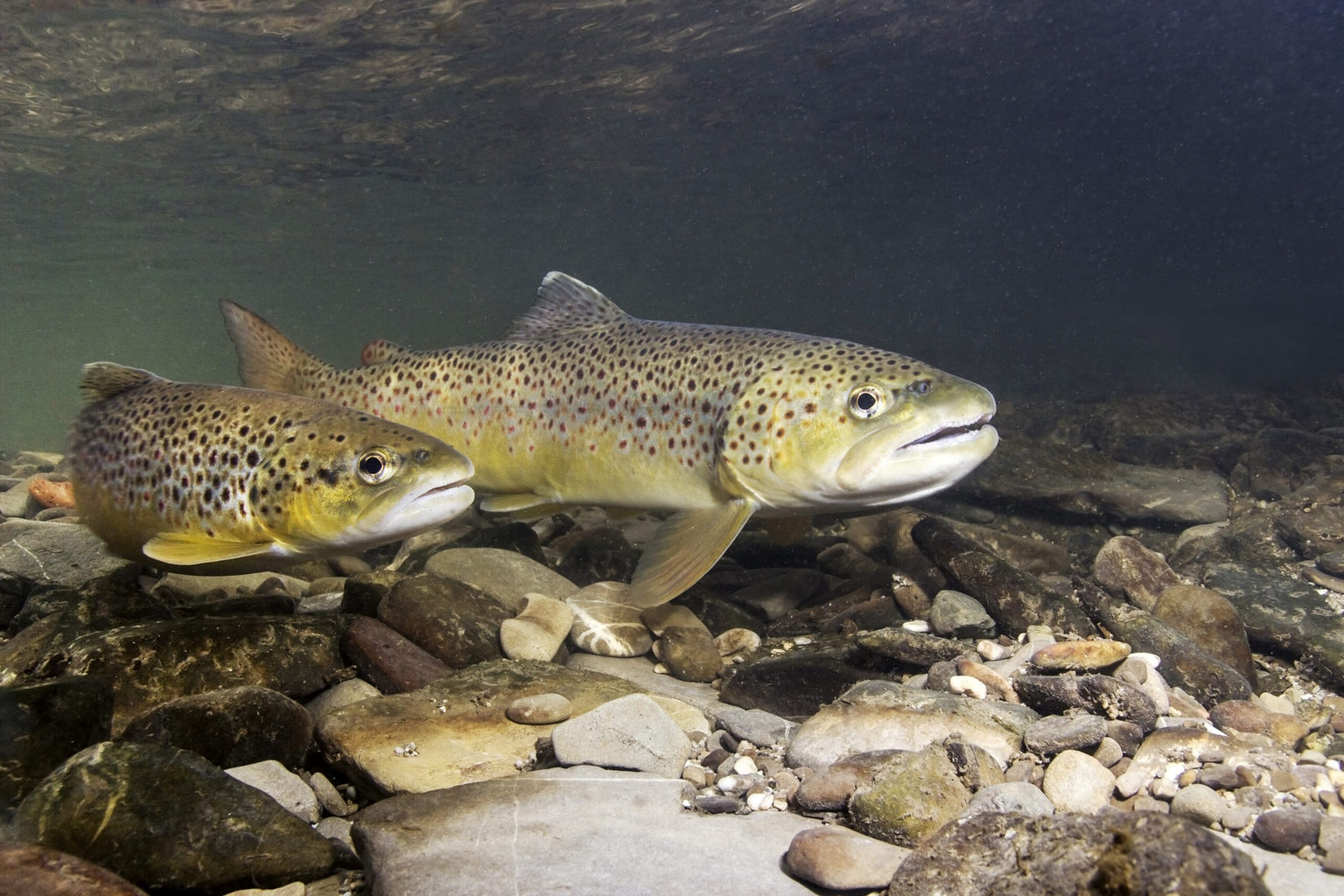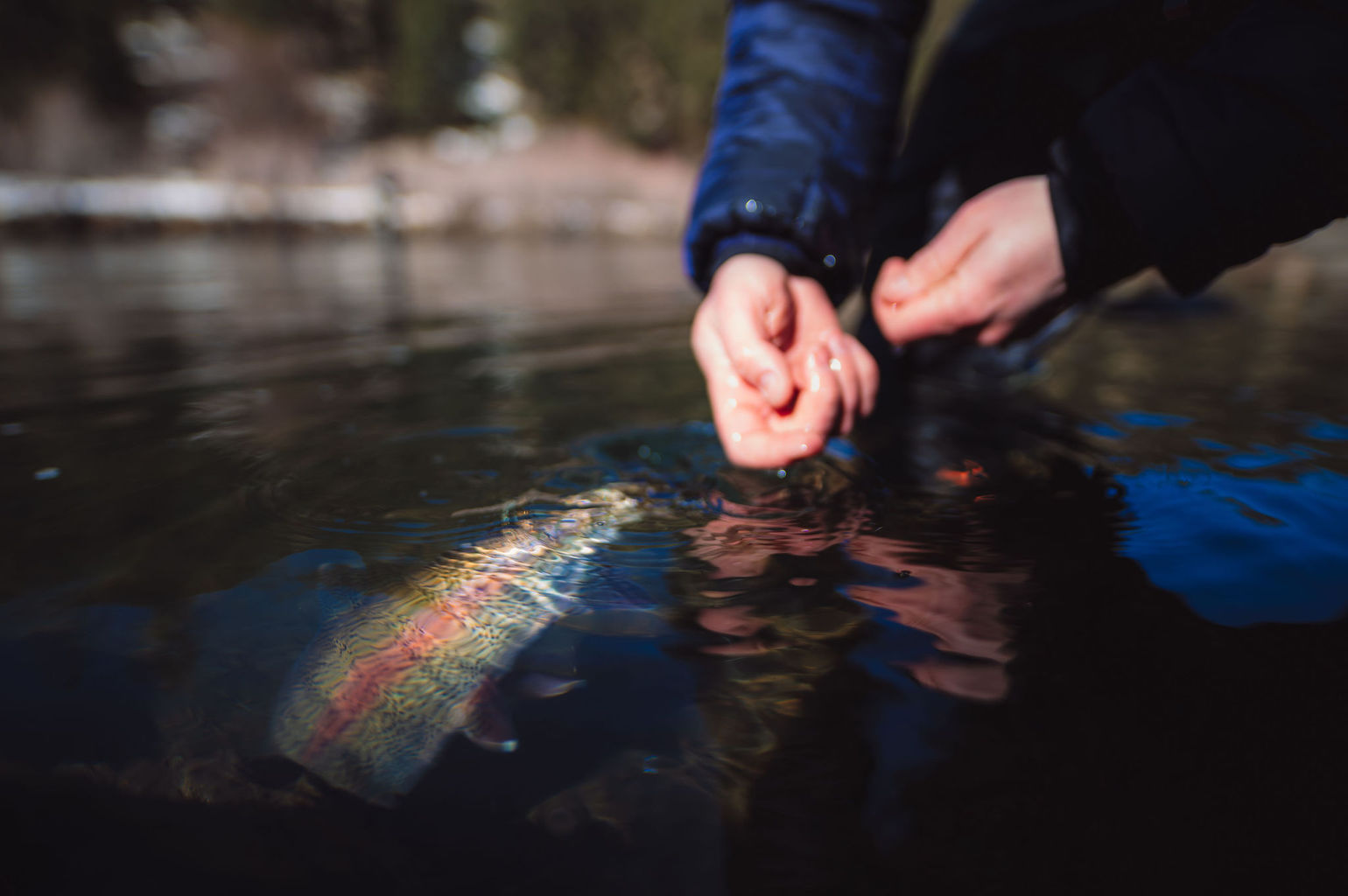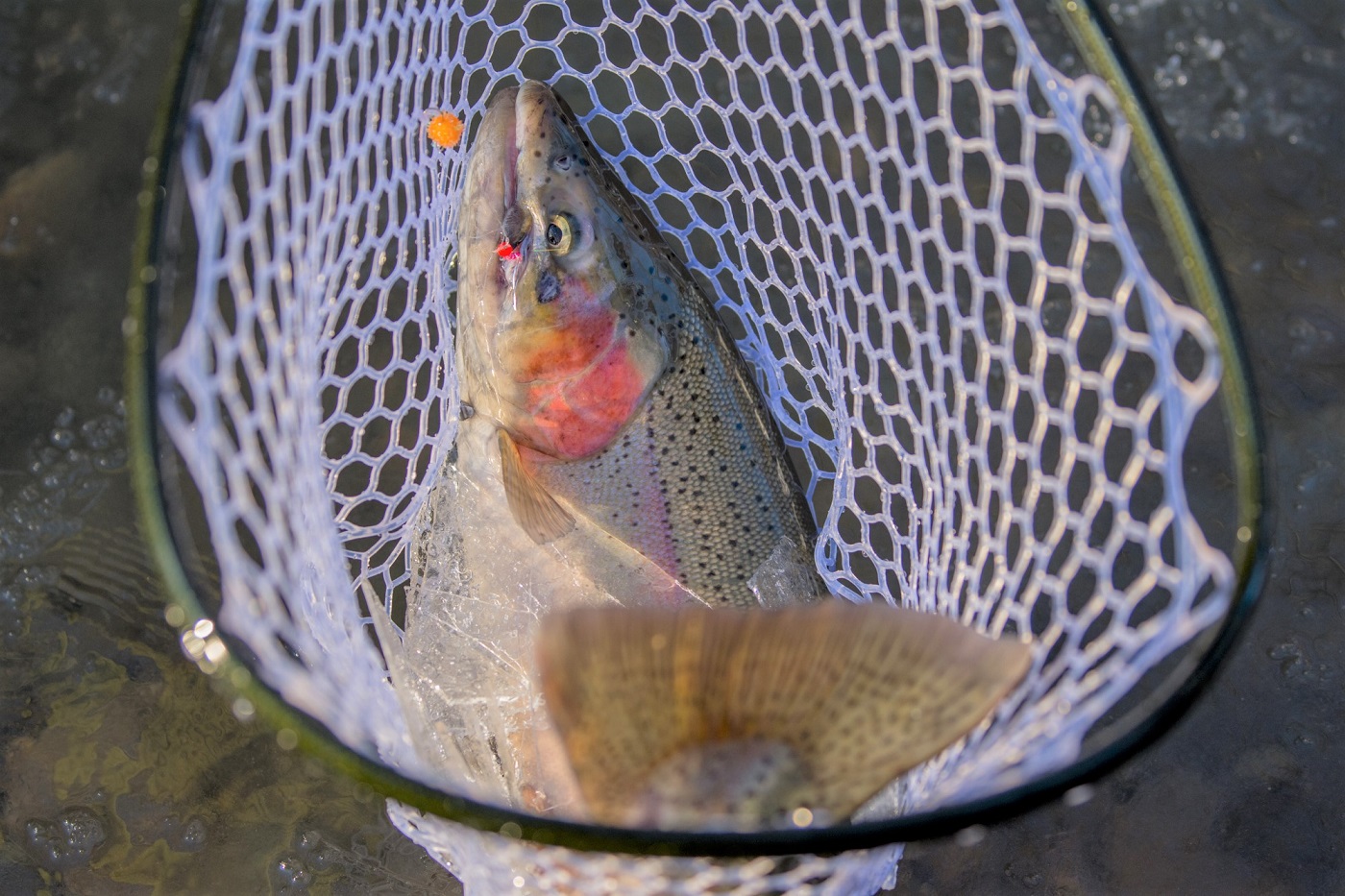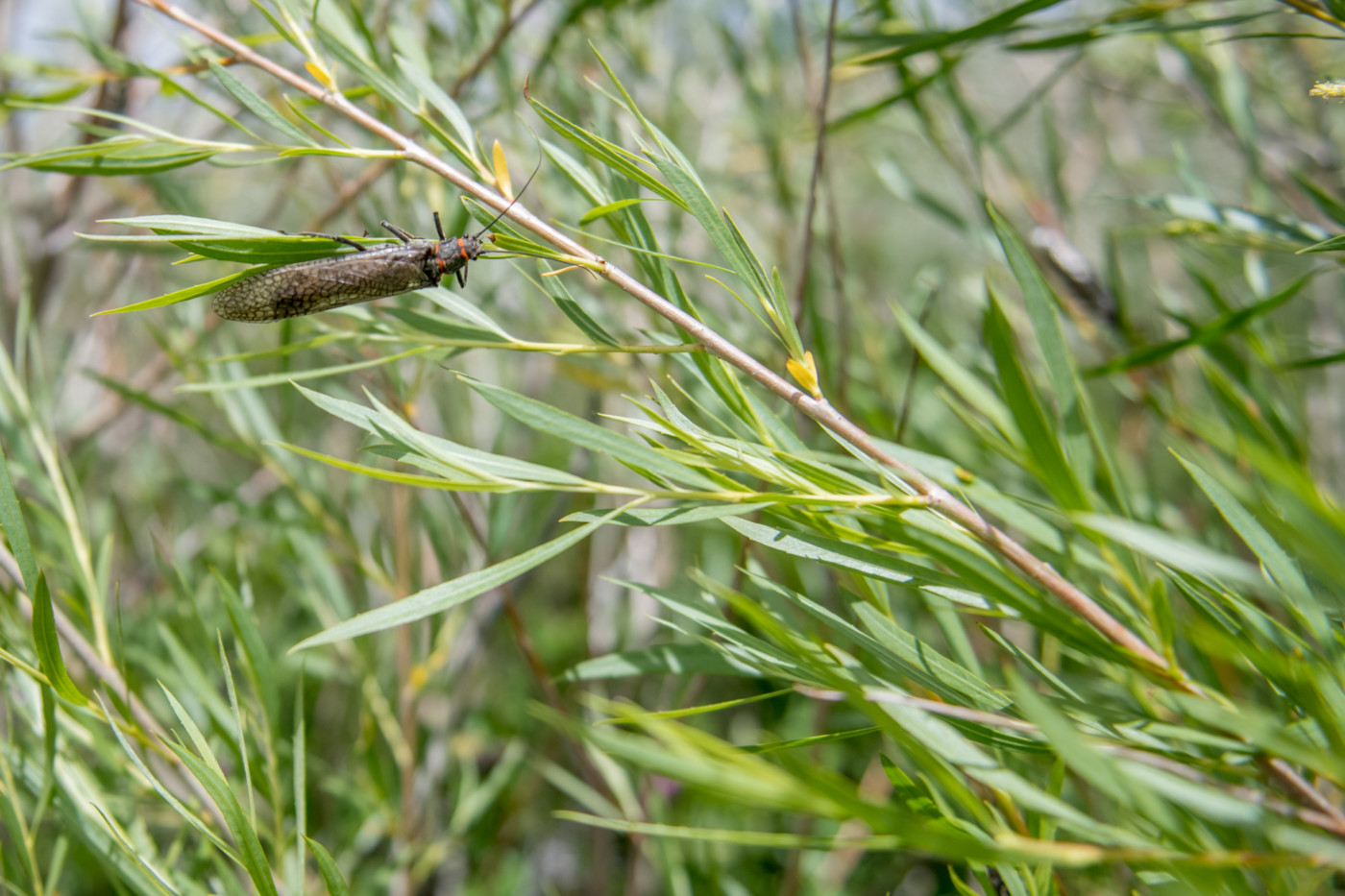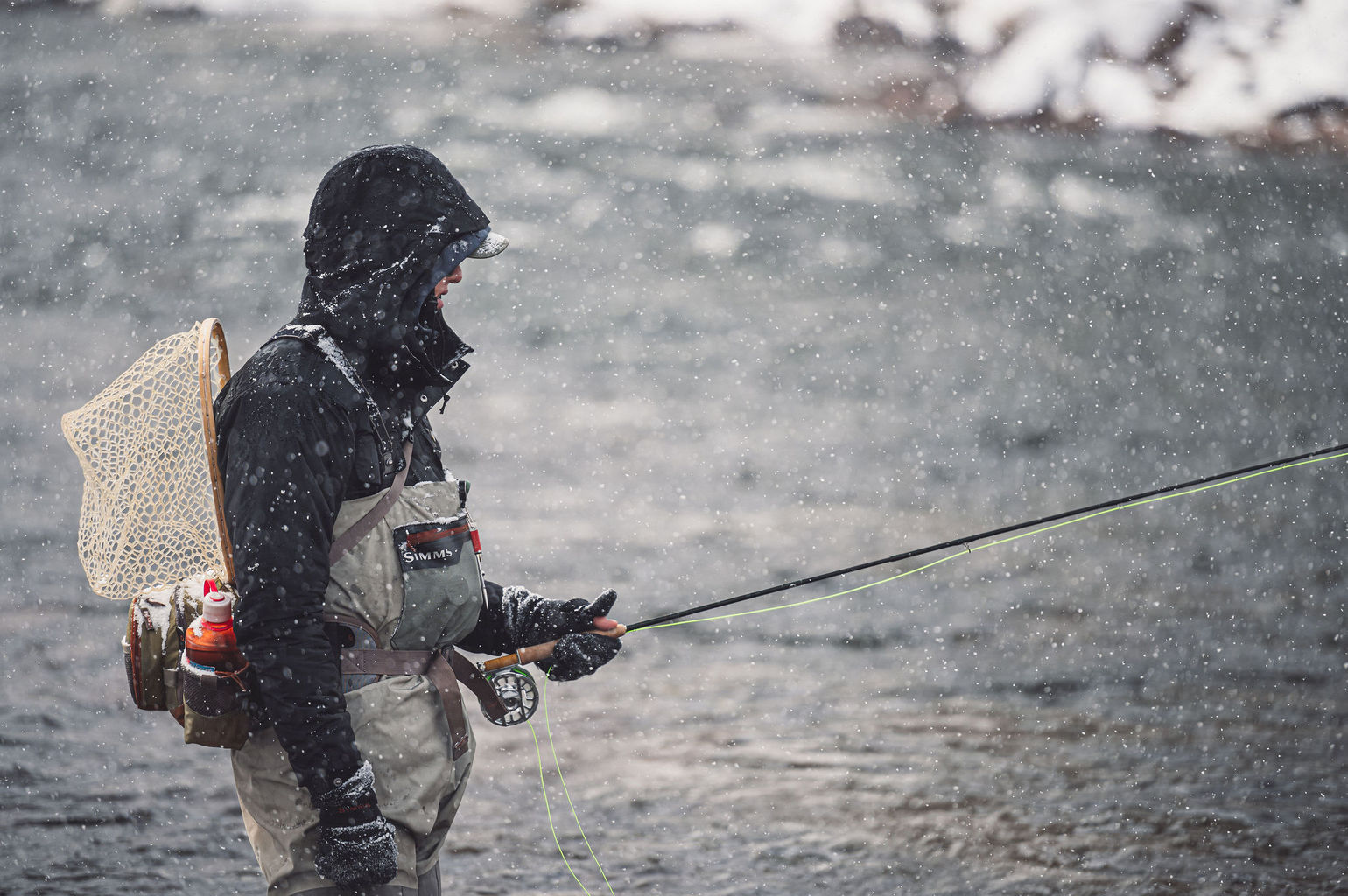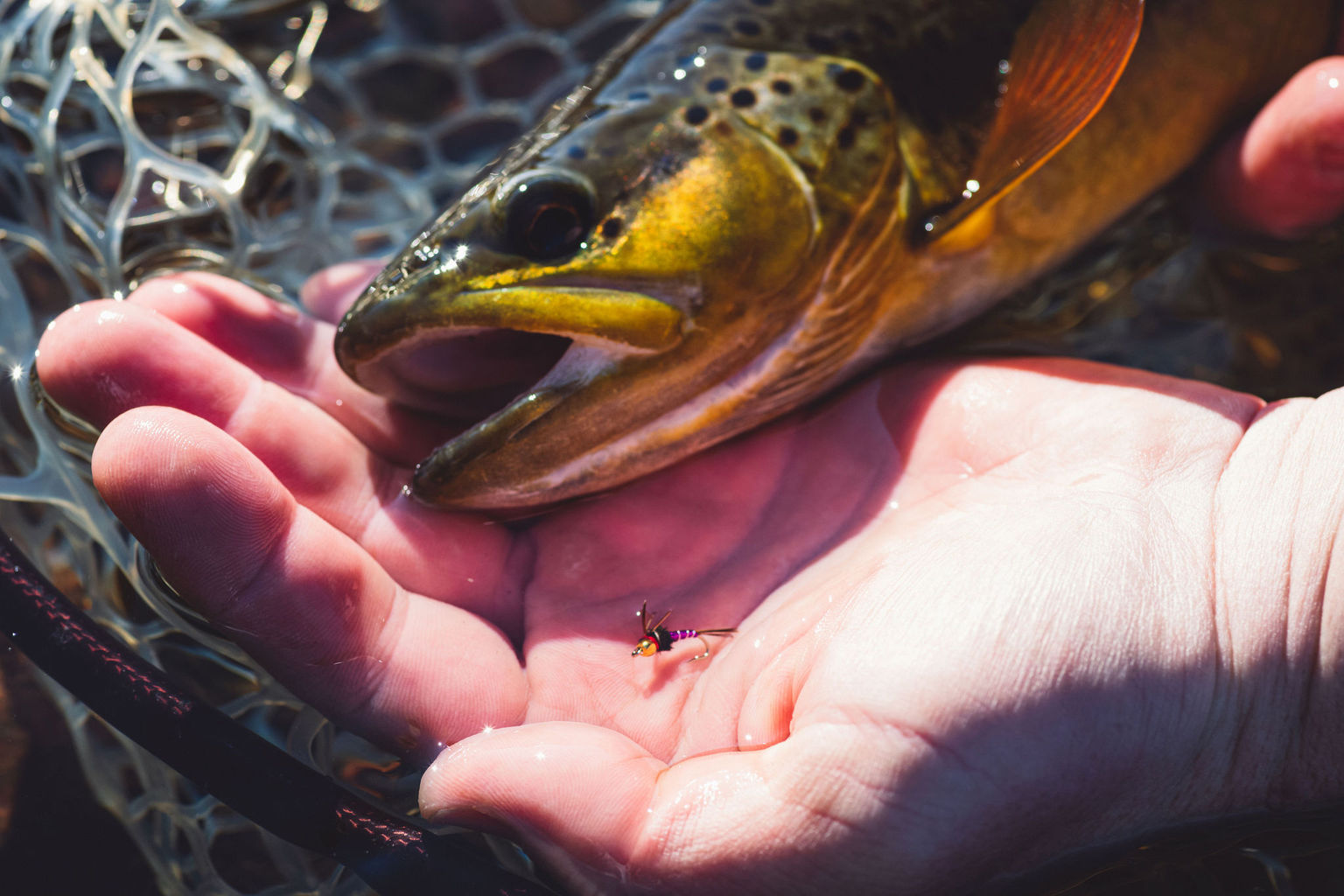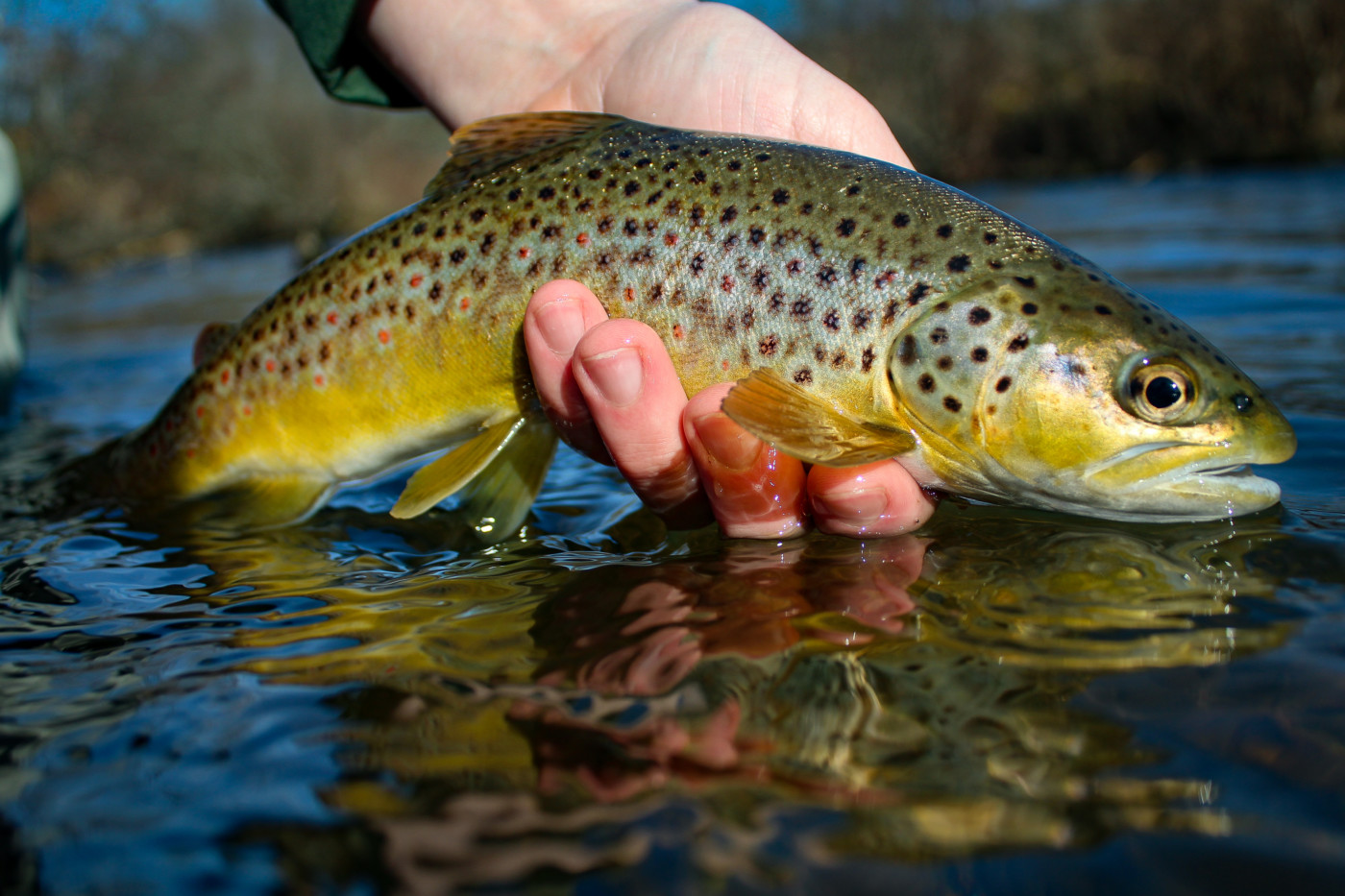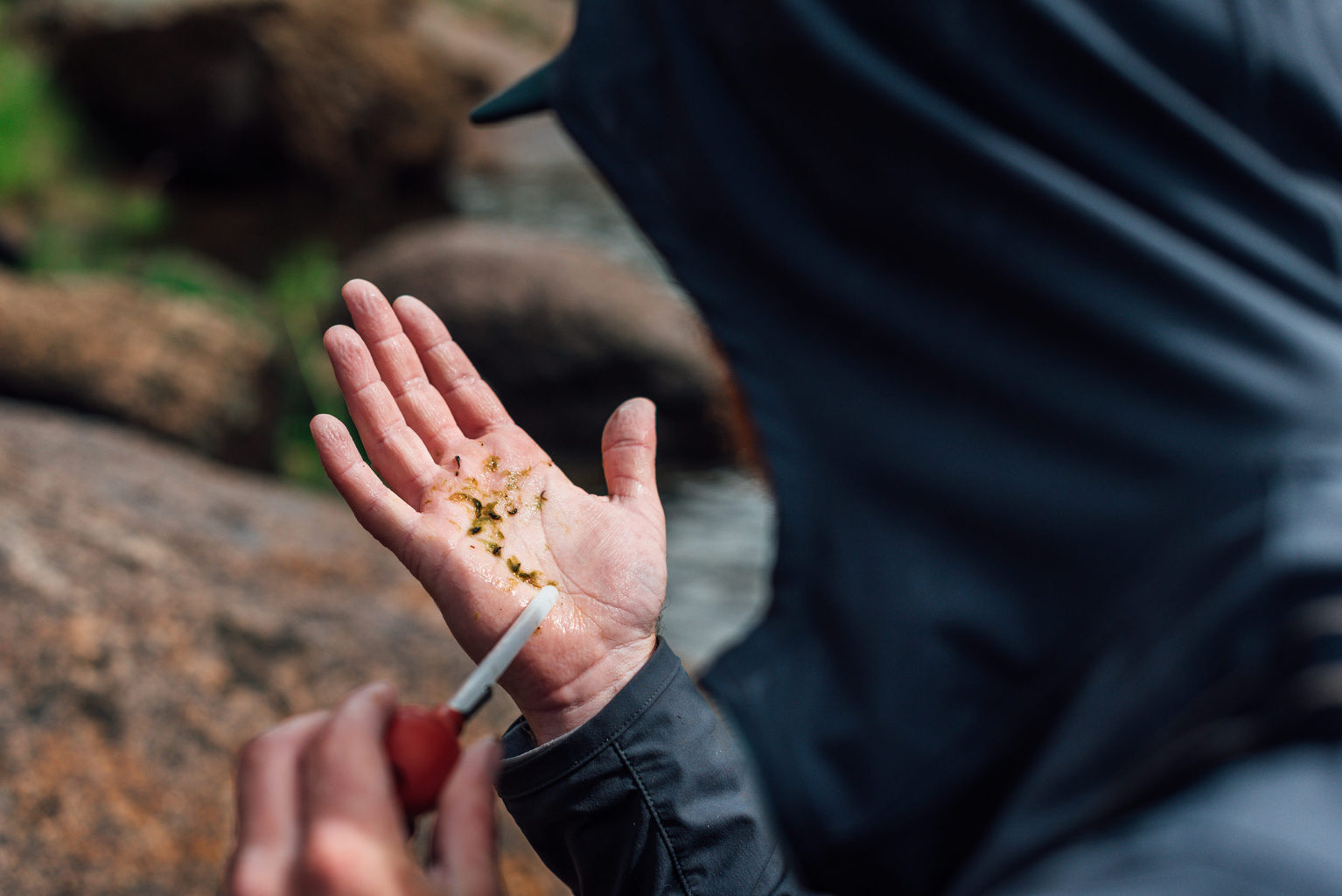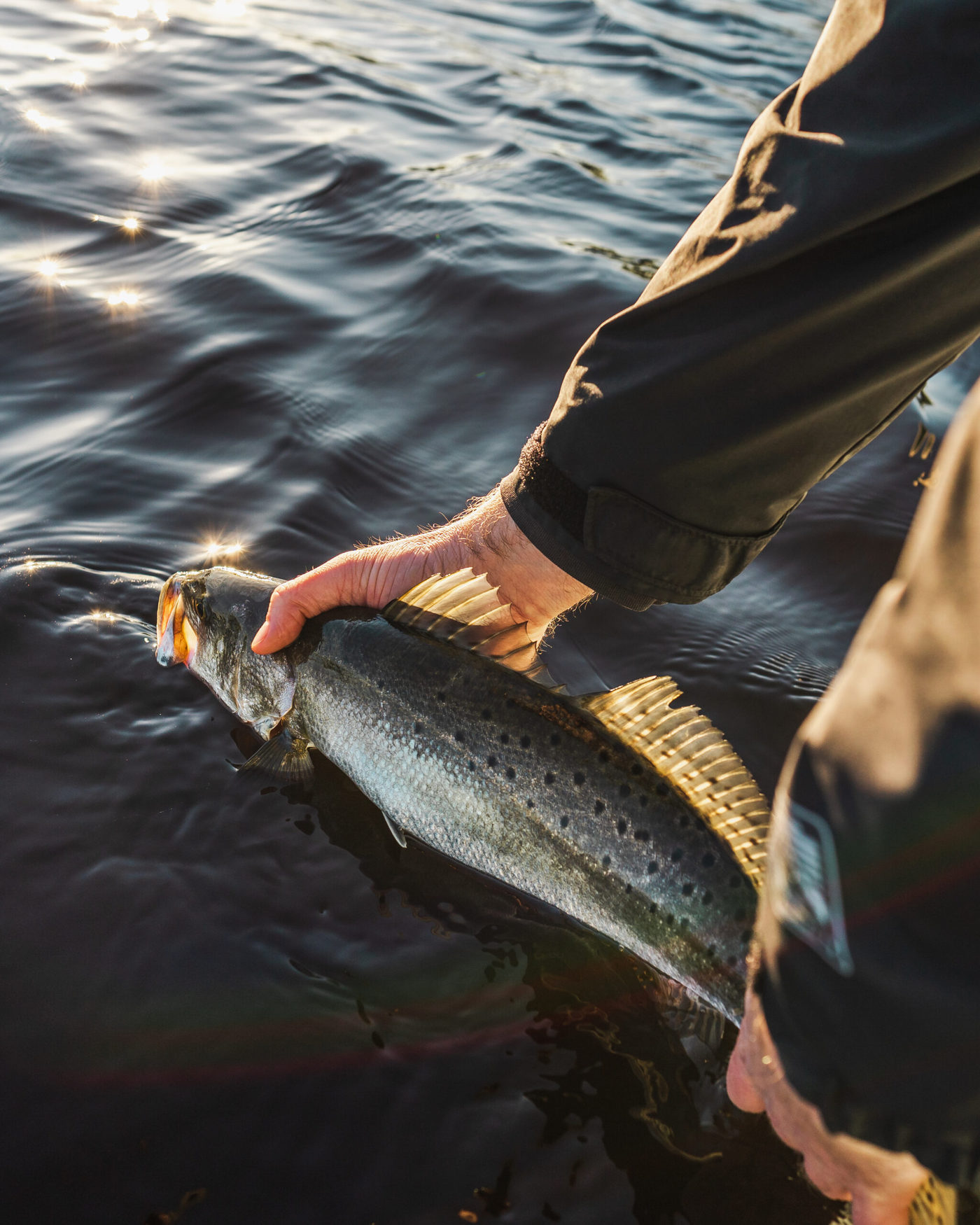How to Handle Trout Without Harming Them
By Colton Orbaker
We know by your expression, hooting, and hollering, that you are excited about the fish you just landed.
You must remember, however, to celebrate your pursuit in a way that is respectful and courteous to the fish.
Trout are actually somewhat delicate you know! Here are some helpful tips on how to best handle trout to ensure their survival, and another thrilling fight in the future!
ONE ~ “Be the fish”
Although surviving nature’s grueling struggles for thousands of years, salmonids are susceptible to suffocation when held out of the water.
The best way to ensure a trout’s survival is to remove the fish from the water as little as possible.
In a perfect world, the fish’s mouth would never leave the water, and we would all remove the hook under the current.

Understandably, first-time trout anglers and trophy hunters will want to take a photo of their catches! A big 20+ in bull brown trout fought for minutes is a trophy in ANY angler’s book, as is an 8” stocked rainbow caught by a brand new fly fisher at the age of six.
Some of the best fish photos are taken with the fish still in the water!
However, if removing the fish from the water is unavoidable, count in increments of ten to fifteen before submerging the fish again.
Trout breathe underwater and tire easily. Always remember to keep oxygen flowing into their mouths and through their gills by holding them upstream to rest between camera flashes.
TWO ~ “DON’T GET HANDSY”
The less you handle a trout the better. Period.
When landing a trout, the ideal release would be to grab the fly, twist, and off goes the fish.
However, this is real life. If you plan to handle a fish, wet your bare hands first, to protect the slimy coating protecting the fish.
Handle the fish quickly and gently, cupping the body without squeezing, then release the fish head-forward into the current. This better ensures the survival of the fish.

The rule of thumb is to handle the fish as little as possible. Overstressing the fish is a key component to injury. In addition, handle the fish with care, and do not grab the fish by the mouth or gills.
Instead, cup your hands under the main body of the fish, and control the tail of the fish (at the base) if the fish is larger. NEVER squeeze the fish, as this may damage internal organs or fins.
THREE ~ “We DON’T Like Barb!”
Any angler worth his salt (get it?) will learn to out angle a fish when playing it to best capitalize on leverages and pressures to land more fish.
When landing every fish in the river slowly loses priority to better increasing the vitality and health of the fish in the river in an angler’s mentality, THEN and only then will one truly appreciate what the use of barbless hooks does for catch and release fly fishing.

By using barbless hooks, or mashing the barbs down with forceps, pliers, or a tying vise, the time required to release a fish is decreased, as well as the potential for bleeding out and injury.
In addition, if a fly is taken deeply into the trout’s stomach, the angler is far more likely to unhook the fish and release the fish alive and well.
FOUR ~ “Length Matters”
When playing a fish, the shorter the fight, the less stress the trout endures. To increase the survival of a fish, play it as quickly as possible.
If catch and release are a priority, please land fish quickly and follow the proper steps to handle the fish.
BONUS! “Why net? Why not?”
The hot debate across the far reaches of today’s internet gurus is whether netting a fish is beneficial to its better survival. There are plenty of pros and cons associated with utilizing a net to land fish.
Using a net to land small fish is unnecessary for the majority of catches.
A net is beneficial for keeping a fish submerged in the current but is also stressing a fish when a simple release may increase the fish’s chances of survival.

Managing and landing big game fish such as steelhead and salmon is often easier with a net, and decreases the amount of time required to successfully play a fish to the net.

Beaching a fish is often damaging to the quarry, so using a net to manage them before a quick release may be a better alternative. Regardless of your reason to utilize a net, a rubberized net bag must be prioritized. This is the healthiest and least destructive material.


